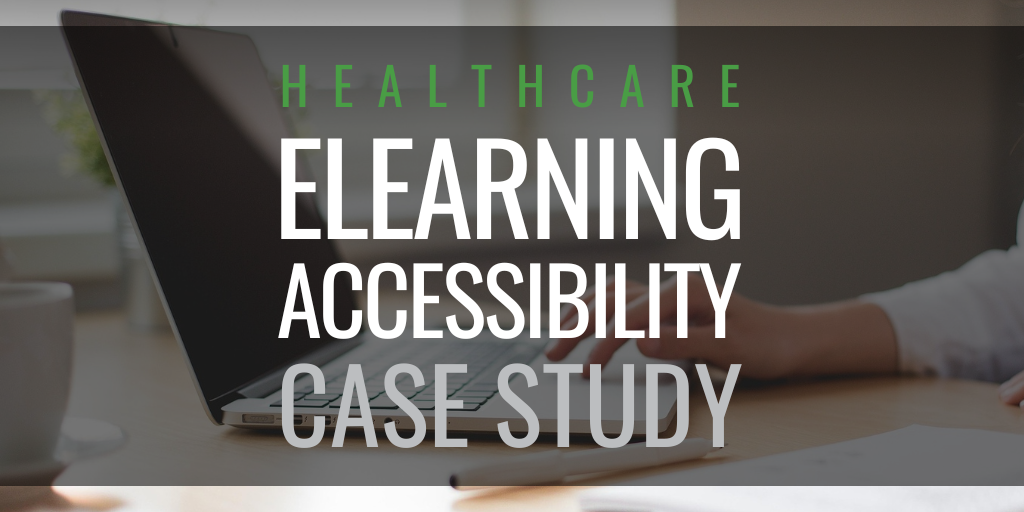The critical role of accessibility in elearning
/In today’s digital age, elearning has become a vital tool for education and professional development, transcending traditional barriers to learning. However, the effectiveness of elearning is highly contingent upon its accessibility, making it imperative to design courses that everyone can use, regardless of their physical or cognitive abilities. May 16 is Global Accessibility Awareness Day, so it’s the perfect time to reflect on the accessibility of online learning and online training resources.
Understanding elearning accessibility
Accessibility in elearning ensures that all learners, including those with disabilities, can fully engage with content without barriers. This involves creating course materials that can be navigated, understood and interacted with by people with a variety of disabilities, including visual, auditory, motor, and cognitive impairments.
Why accessibility matters
Legal compliance: Several laws and regulations, such as the Web Content Accessibility Guidelines (WCAG), the Accessibility for Ontarians with Disabilities Act (AODA), the Americans with Disabilities Act (ADA) and Section 508, mandate accessibility. Non-compliance can lead to lawsuits and financial penalties, highlighting the legal necessity of incorporating accessibility into elearning design.
Ethical considerations: Accessibility is not just a legal requirement but a moral imperative. All learners deserve equal opportunities to learn and grow. Accessible elearning demonstrates an organization's commitment to fairness and equality.
Enhanced learning experience: Accessible elearning materials benefit all learners, not just those with disabilities. Features such as subtitles or clear navigation can improve the learning experience for everyone, including those in noisy environments or non-native speakers.
Broader reach and inclusion: Accessible elearning allows organizations to reach a wider audience, including the millions of people with disabilities. This inclusivity can significantly expand the potential user base and market for educational content.
Implementing accessibility in elearning
Creating accessible elearning content requires thoughtful design and the integration of various accessibility features:
Visual accessibility: Include alternative text for images, use sufficient contrast for text and background and ensure that all information conveyed with color is also available without color.
Auditory accessibility: Provide captions for videos, use transcripts for audio content and ensure that all video content is accessible without sound.
Motor accessibility: Design courses that can be navigated using keyboard shortcuts and avoid requiring precise mouse control.
Cognitive accessibility: Use clear and simple language, provide consistent navigation and offer support for learners with different learning disabilities.
Tools and technologies
Advancements in authoring tools have simplified the process of creating accessible content. Many modern elearning platforms come equipped with built-in accessibility features, such as text-to-speech, adjustable text size and keyboard navigation support. Selecting the right tools that comply with accessibility standards is crucial for creating effective elearning materials.
Continuous improvement and feedback
Accessibility should be seen as an ongoing commitment rather than a one-time effort. Regularly updating elearning courses based on feedback from users, especially those with disabilities, is essential. This feedback can help identify gaps in accessibility and guide improvements, ensuring that the elearning materials evolve with technological advancements and changing user needs.
Conclusion
The importance of accessibility in elearning cannot be overstated. It’s a critical factor that affects the usability and effectiveness of educational content. By prioritizing accessibility, educational institutions and businesses can ensure that their elearning materials are not only compliant with legal standards but also provide an inclusive, engaging and effective learning experience for all users.
Incorporating accessibility into elearning is not just about enhancing user experience — it’s about extending educational opportunities to all learners, regardless of their physical or cognitive conditions. This approach not only broadens the impact of educational programs but also contributes to a more inclusive society.
For more information on elearning accessibility, click here .
At Limestone we’ve encountered an increasing number clients who have accessibility requirements. How about you? We’d love to hear about your experiences with accessibility compliance. Let us know in the Comments section below, or on X (formerly Twitter), Facebook, or LinkedIn!







